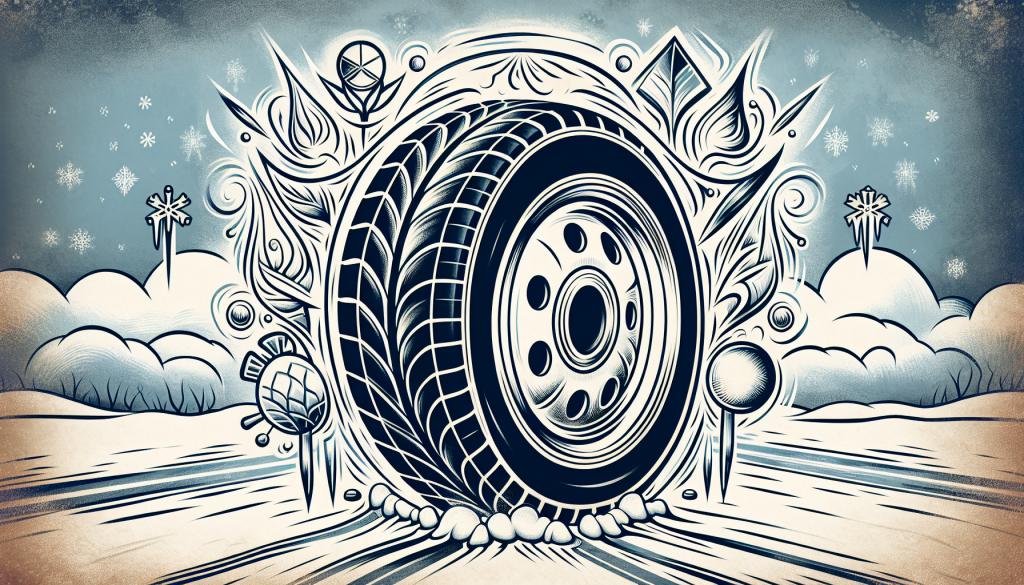Winter Tire Basics
Why Bother with Winter Tires?
Winter’s no joke, and driving in it shouldn’t be either. Winter tires give you that extra grip and more control when the roads get icy. Their rubber stays flexible even when it’s cold, and their special tread patterns help with all that snow and ice business. Imagine trying to run on ice in flip-flops versus in boots. Yeah, it’s like that.
Here’s why you need ’em:
- Stickier on snow and ice.
- Better brakes when it’s cold.
- Smoother handling in nasty weather.
Look for the 3 Peak Mountain Snowflake symbol. It’s like a badge of honor that means these tires can handle serious winter conditions. If you live where it’s freezing most of the winter, these are worth every penny.
When to Install Your Winter Tires
Listen up, because this is important: Put winter tires on all four wheels, not just two. Doesn’t matter if your car’s front-wheel drive or rear-wheel drive. You need balanced traction or you’re likely to spin out and lose control.
Get those tires on before it gets too cold. If you’ve got a spare set of wheels, mount your winter tires on those. Makes swapping them out each season a breeze and saves wear and tear.
Remember these tips:
- Go for four winter tires, not just two.
- Mount them on an extra set of wheels for easy swaps.
- Don’t skimp; a full set keeps you safer.
For the best grip and safety, always roll with four winter tires. Trust me, it’s a game-changer. Want more deets? Check out our pieces on winter tire technologies and the highs and lows of studded winter tires. Stay safe out there!
Quick Tips Recap:
- Four winter tires > two winter tires.
- Mount them on extra wheels.
- Look for the 3 Peak Mountain Snowflake.
For more info, hit up Auto Care Plus or Bridgestone Tire. And check out our other resources for in-depth tire talk.
Get Ready for Winter: Know Your Tire Features
Picking the right winter tires is more than just a chore—it’s about ensuring safety and control when the mercury drops. Let’s break down what you need to know, no fluff, just facts with a sprinkle of humor.
Tread Rubber Composition
Winter tires are like your favorite hoodie for your car. They’re made with special rubber compounds that stay squishy in the cold, unlike the stiff all-season and summer counterparts. This flexibility means better grip and control when you’re navigating icy roads (Bridgestone Tire).
| Tire Type | Flexibility in Cold |
|---|---|
| Winter Tires | Like a yoga master |
| All-Season Tires | Meh, medium |
| Summer Tires | Rigidity central |
Need the nitty-gritty on tire materials? Head over to winter tire technologies explained.
Unique Tread Patterns
Imagine tires with grooves deep enough to lose a penny in. Winter tires have these unique patterns to stop snow from building up and to channel water away better. The zigzags and wider grooves also enhance traction when you find yourself in snowy or wet situations.
| Tread Pattern Feature | Function |
|---|---|
| Deep Tread Depth | Snow, be gone! |
| Wider Grooves | Water, vamoose! |
| Zigzag Patterns | Cling on, snow! |
For a closer look at these fascinating patterns, see winter tire tread patterns comparison.
Biting Edges and Sipes
Think of biting edges and sipes as tiny claws gripping the ice for dear life. These features crank up the traction on icy roads, helping you stay safe and in control (Bridgestone Tire).
| Feature | Benefit |
|---|---|
| Biting Edges | Extra icy grip |
| High Sipe Density | Better traction on ice |
Curious about which biting edge designs cut it? Check out our article on winter tire performance trade-offs.
Knowing these vital features helps you choose the right tires to brave winter’s worst, giving you peace of mind and better performance on snowy and icy roads. For more juicy details, like the best winter tire sidewall designs, browse our other articles. Happy winter driving!



